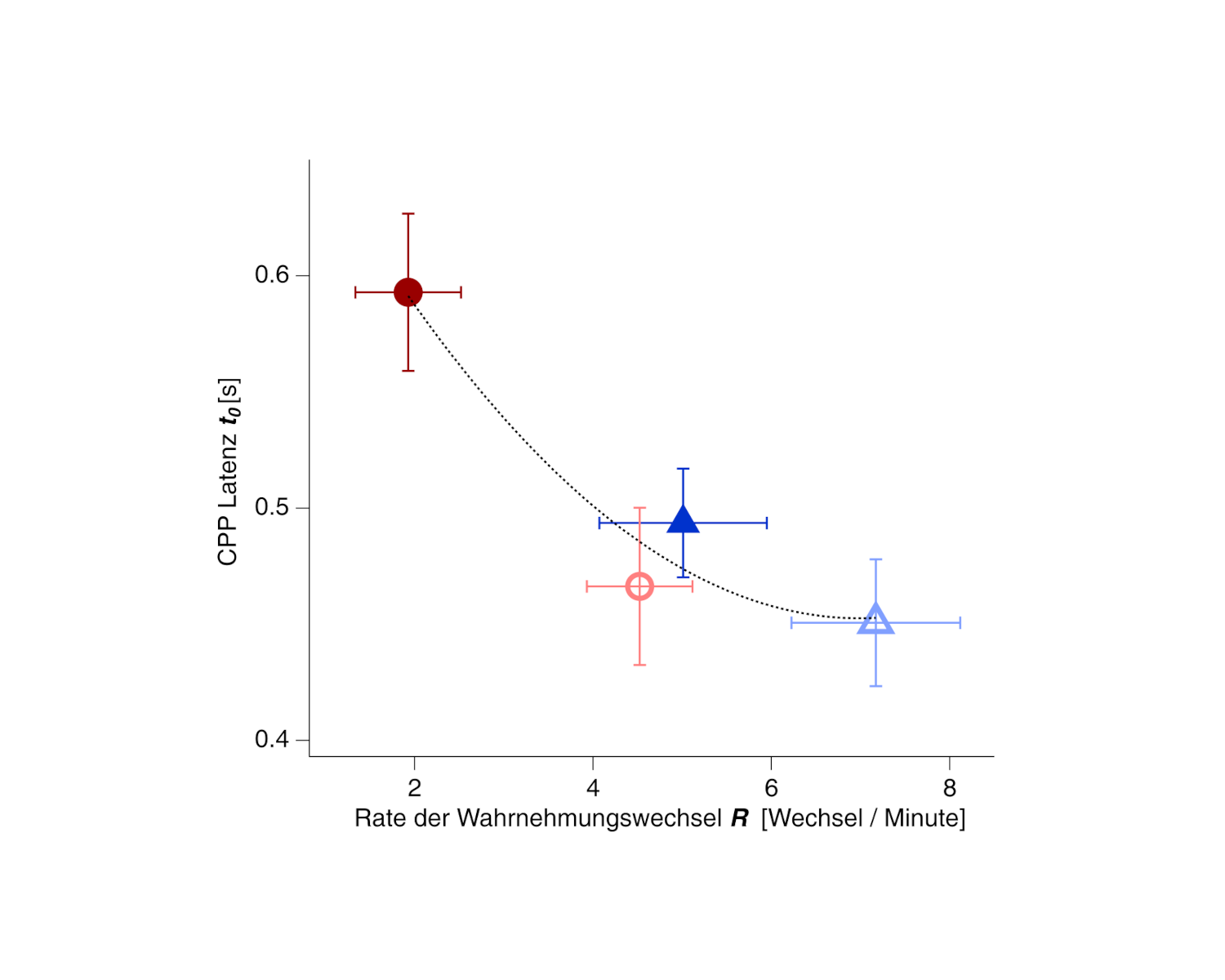Mind and Matter
Despite the success story of scientific and, in particular, neuroscientific research to date, there are still no convincing answers to central questions about consciousness, free will or the mind-matter problem. Interesting in this context, however, are considerations that the physicist and Nobel Prize winner Wolfgang Pauli and the famous psychiatrist Carl Gustav Jung (e.g. Atmanspacher & Fuchs 2014) made together and which ultimately led Atmanspacher and colleagues to formulate the “Generalized Quantum Theory” (Atmanspacher et al. 2002). The Generalized Quantum Theory is a formal framework theory that allows the application of mathematical principles beyond physics and from which precise and empirically testable hypotheses can be derived. A very good overview article by Harald Atmanspacher can be found in the Stanford Encyclopedia of Philosophy (Atmanspacher 2020).
Atmanspacher and colleagues chose bistability of ambiguous figures as a model situation for this theory and developed the so-called Necker-Zeno Model for Bistable Perception, which is based on quantum theoretical considerations (Atmanspacher et al. 2004, 2008). The Necker-Zeno Model presents a relation of three observables from three different time scales that are frequently discussed in psychology and cognitive science. In recent years, we have found both psychophysical and electrophysiological empirical confirmation of this relation. In particular, the authors of the Necker-Zeno model postulate increased values on certain time scales in people with meditation experience, which we were able to confirm some time ago in an EEG study (Fig. 1 and Kornmeier et al., 2017).
Figure 1
Grand mean data (± SEM) on the negative correlation between reversal rate when viewing a Necker cube (psychophysical measure) and the latency of a component of the event-related potential (CPP: centro-parietal positivity). The association of higher CPP latencies with lower reversal rates is also quantitatively predicted by the Necker-Zeno model. Red / blue symbols = meditation-experienced / inexperienced subjects; light colors: passive observation; dark colors: volitional attempt to keep perception stable. [Illustration from Kornmeier et al. 2017]
Publications
Atmanspacher, H. (2020). Quantum Approaches to Consciousness. In The Stanford Encyclopedia of Philosophy . Metaphysics Research Lab, Stanford University. https://plato.stanford.edu/archives/sum2020/entries/qt-consciousness/
Kornmeier, J., Friedel, E., Wittmann, M., & Atmanspacher, H. (2017). EEG correlates of cognitive time scales in the Necker-Zeno model for bistable perception. Consciousness and Cognition, 53, 136-150. https://doi.org/10.1016/j.concog.2017.04.011
Atmanspacher, H., & Fuchs, C. A. (2014). The Pauli-Jung conjecture and its impact today. Imprint Academic. http://books.imprint.co.uk/book/?gcoi=71157109262830
Atmanspacher, H., & Filk, T. (2010). A proposed test of temporal nonlocality in bistable perception. Journal of Mathematical Psychology, 54(3), 314-321. https://doi.org/10.1016/j.jmp.2009.12.001
Atmanspacher, H., Bach, M., Filk, T., Kornmeier, J., & Römer, H. (2008). Cognitive Time Scales in a Necker-Zeno Model for Bistable Perception. The Open Cybernetics and Systemics Journal, 2, 234-251. https://doi.org/10.1016/j.concog.2017.04.011
Atmanspacher, H., Filk, T., & Römer, H. (2004). Quantum Zeno features of bistable perception. Biological Cybernetics, 90, 33-40.
Atmanspacher, H., Römer, H., & Walach, H. (2002). Weak quantum theory: Complementarity and entanglement in physics and beyond. Found Phys, 32, 379-406. https://link.springer.com/article/10.1023/A:1014809312397
